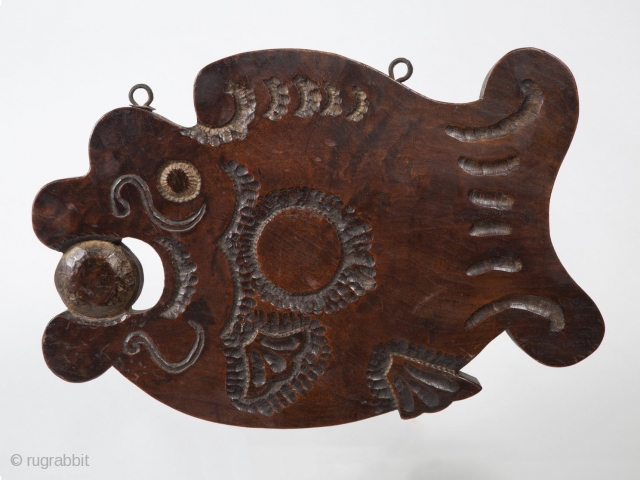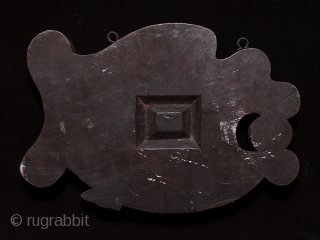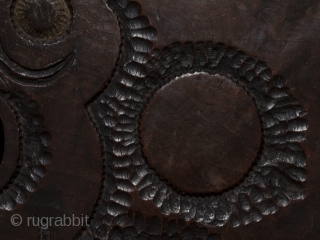Back
Buddhist temple gong,
Korea.
Zelkova (elm) wood, iron,
10.5" (26.7 cm) high, 15.25" (38.6 cm) wide, 1.5" (3.7 cm) thick.
Late 19th to early 20th century.
There is some mystery surrounding this folk carving, but it appears to be in the image of a Buddhist temple gong, which were used to keep rhythm during the chanting of sutras. Since fish never sleep, it was a reminder to stay awake during the recitations; the magic pearl in its mouth was said to fulfill all wishes. It would have been struck on the circle in the center of the fish, and the carved out area on the back may have had some effect on the sound. There are traces of gilding on the eye and the pearl and a little white paint on the reverse.
price:
SOLD
- Home
- Antique Rugs by Region
- Category
- Profiles
- Post Items Free
- Albums
- Benaki Museum of Islamic Art
- Budapest: Ottoman Carpets
- Gulbenkian Museum
- Islamic Carpets. Brooklyn
- Islamic Textiles. Brooklyn
- Konya Museum: Rugs
- MKG, Hamburg
- MMA: Caucasian Carpets
- MMA: Mamluk Carpets
- MMA: Mughal Indian Carpets
- MMA: Ottoman Carpets
- MMA: Safavid Persian Carpets
- MMA: Turkmen Rugs
- McCoy Jones Kilims
- Ottoman textiles. Met
- Philadelphia Museum
- Rugs and Carpets: Berlin
- Seljuqs at the Met
- TIEM, Istanbul: Carpets
- V&A: Classical Carpets
- Vakiflar Carpets: Istanbul
- Baluch Rugs: Indianapolis
- Gallery Exhibitions
- Jaf an Exhibition
- Alberto Levi Gallery
- Andean Textile
- Christie's London: 2016
- Francesca Galloway
- HALI at 40
- ICOC Washington, DC 2018
- Jajims of the Shahsavan
- London Islamic Week April, 2018
- Mongolian Felts
- Navajo Rugs: JB Moore
- Persian Piled Weavings
- SF Tribal & Textile Art Show 2020
- SF Tribal 2019
- Sotheby's: C. Alexander
- Turkish Prayer Rugs
- Turkmen Main Carpets ICOC 2007











